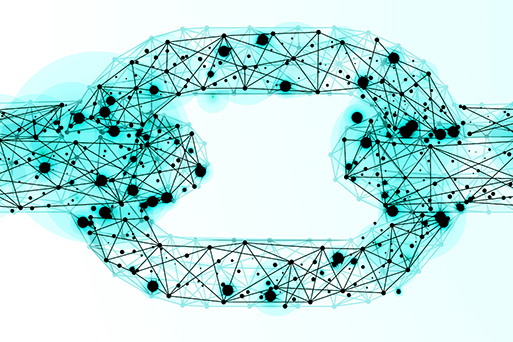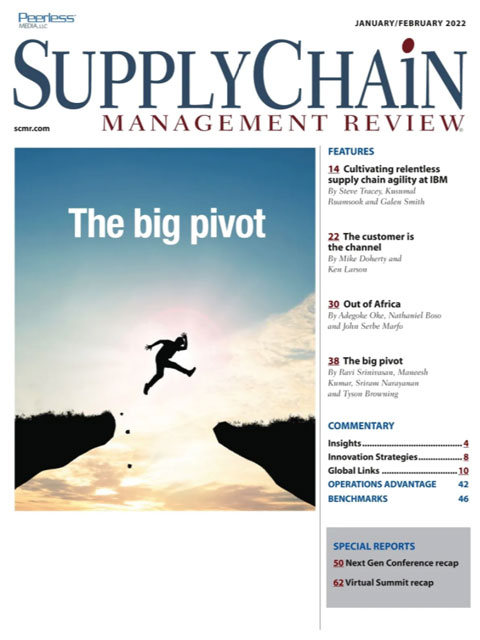Sorry, but your login has failed. Please recheck your login information and resubmit. If your subscription has expired, renew here.
January-February 2022
Well, that’s over, and aren’t we all glad to put 2020 in the rear-view mirror? For a minute, however, let’s look at a silver lining, because I think there is one for supply chain managers. That’s because the pandemic put supply chain in the spotlight like never before—and, with the approval of a vaccine just a few weeks ago in December, supply chain and cold chain are back in the news… While sales usually gets all the attention, maybe 2021 is our time to shine.” That’s the beginning of the column I wrote for the January 2021 issue, and maybe I was a little too pollyannish. Browse this issue archive.Need Help? Contact customer service 847-559-7581 More options
At the beginning of each year, we often pause to reflect on the past and create a vision for the future. Experience indicates that with each decade, there are pronounced disruptions that shake the structure of the market that supply network leadership must respond to (carpe diem).
In the 90s, it was the Y2K threat, the proliferation of personal computing, the rise of the Internet and the deployment of ERP applications. The 21st century heralded in internet proliferation and ubiquity, industry connectivity, economic uncertainty and the rise of e-commerce.
The past decade of the 10s brought forward the emergence of business/industry 4.0 technologies including Cloud computing, the impact of social media, the transformation from supply “chain” thinking to supply “network and ecosystem” thinking and exposure to disruptive risks such as, environmental (ESG) impact, geopolitical shifts, new financial mediums and the emergence of the
pandemic. It has been a lot.
The dynamics of structural change
Entering the current decade, we had hoped to return to normal. However, as events unfold, our normal is anything but normal. Rather, we are entering the new beginning to our journey and if early indicators are correct, as we enter into year three of the current decade, it appears that we are going to experience a “Roaring 20s” of accelerated change across multiple dimensions. We’re calling this the “Decade of Digitalization and Disruption.”
As we begin to envision the future, issues encompass a wide spectrum ranging from unprecedented spikes and drops in demand and supply, backlogs and bottlenecks at ports and intermodal hubs, cross functional worker shortages and a new generation of workers, stretched lead times to transport items delivered cross border, health risk, weather/environment risk and regulation, electricity shortages, geopolitical and economic uncertainty and the unintended consequences from channel responses that ripple throughout to disrupt other channels in the ecosystem.

This complete article is available to subscribers only.
Log in now for full access or start your PLUS+ subscription for instant access.
SC
MR
Sorry, but your login has failed. Please recheck your login information and resubmit. If your subscription has expired, renew here.
January-February 2022
Well, that’s over, and aren’t we all glad to put 2020 in the rear-view mirror? For a minute, however, let’s look at a silver lining, because I think there is one for supply chain managers. That’s because the… Browse this issue archive. Access your online digital edition. Download a PDF file of the January-February 2022 issue.At the beginning of each year, we often pause to reflect on the past and create a vision for the future. Experience indicates that with each decade, there are pronounced disruptions that shake the structure of the market that supply network leadership must respond to (carpe diem).
In the 90s, it was the Y2K threat, the proliferation of personal computing, the rise of the Internet and the deployment of ERP applications. The 21st century heralded in internet proliferation and ubiquity, industry connectivity, economic uncertainty and the rise of e-commerce.
The past decade of the 10s brought forward the emergence of business/industry 4.0 technologies including Cloud computing, the impact of social media, the transformation from supply “chain” thinking to supply “network and ecosystem” thinking and exposure to disruptive risks such as, environmental (ESG) impact, geopolitical shifts, new financial mediums and the emergence of the
pandemic. It has been a lot.
The dynamics of structural change
Entering the current decade, we had hoped to return to normal. However, as events unfold, our normal is anything but normal. Rather, we are entering the new beginning to our journey and if early indicators are correct, as we enter into year three of the current decade, it appears that we are going to experience a “Roaring 20s” of accelerated change across multiple dimensions. We’re calling this the “Decade of Digitalization and Disruption.”
As we begin to envision the future, issues encompass a wide spectrum ranging from unprecedented spikes and drops in demand and supply, backlogs and bottlenecks at ports and intermodal hubs, cross functional worker shortages and a new generation of workers, stretched lead times to transport items delivered cross border, health risk, weather/environment risk and regulation, electricity shortages, geopolitical and economic uncertainty and the unintended consequences from channel responses that ripple throughout to disrupt other channels in the ecosystem.
SC
MR


Latest Supply Chain News
- Services sector sees growth in October, reports ISM
- Balanced supply chain management Part 4: The key—leading beyond the silo
- Managing inbound freight: What has changed in two decades?
- Inbound freight: Often a missed opportunity
- Aggregators sitting on the throne of Africa’s e-commerce supply chains: What lessons can we learn?
- More News
Latest Resources

 Explore
Explore
Software & Technology News
- Nine questions are the key to AI success in building resilient supply chains
- Looking back at NextGen 2024
- AI is moving omnichannel closer to the customer
- How technological innovation is paving the way for a carbon-free future in logistics and supply chains
- Körber Supply Chain Software’s Craig Moore says MercuryGate acquisition is about the customer
- Robotic use grows by 10%
- More Software & Technology
Latest Software & Technology Resources

Subscribe

Supply Chain Management Review delivers the best industry content.

Editors’ Picks





